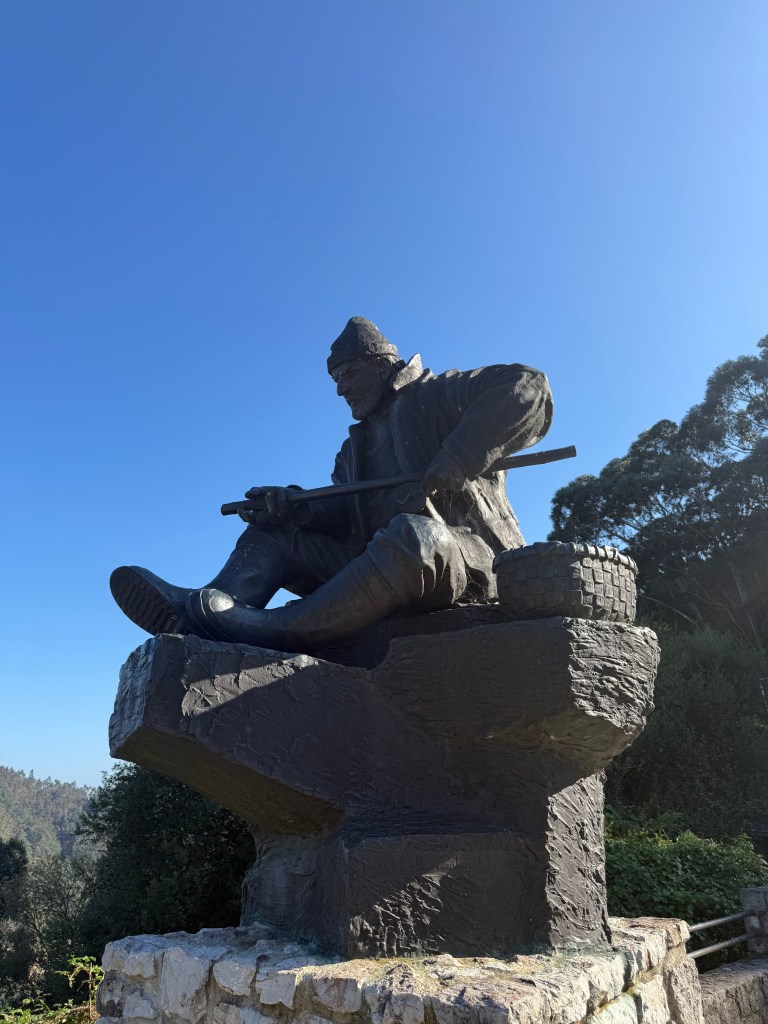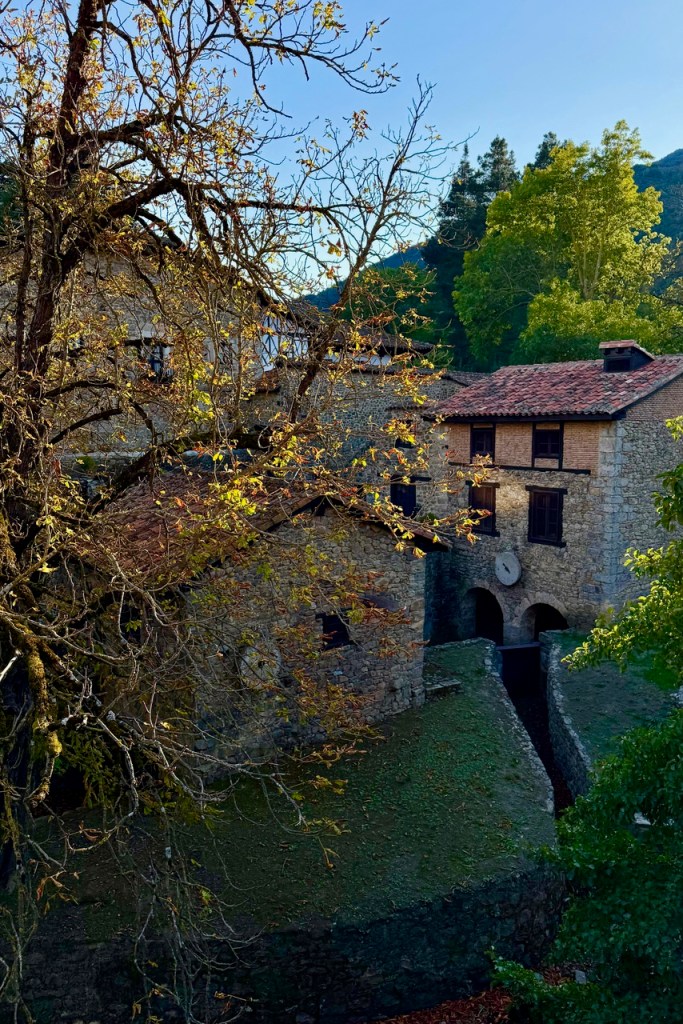From Cantabria to the Cross: A Coastal Detour
From Cantabria to the Cross: A Coastal Detour
— by David Eugene Perry, photos by Alfredo Casuso
Part of a continuing exploration of Off-the-beaten-path Spain by Alfredo and David, including research for the forthcoming novel, Thorns of the 15 Roses, sequel to Upon This Rock

.11 October 2025: Leaving Santander, Alfredo and I took the slower, scenic road back to Llanes — the one that hugs the Cantabrian coastline and slips inland through forests and cliffs. Near Pechón, we pulled off the road at a vista point overlooking the sea. There, at the Mirador de Tina Menor, sits “El Pescador de Caña,” a bronze fisherman seated on a rocky perch, rod in hand, his gaze fixed toward the surf.
Installed in September 2010, the sculpture is the work of Antonio Coello de Portugal Narváez, a Madrid-born architect and sculptor who made Pechón his home. Standing nearly three meters tall and weighing 800 kilograms, it honors generations of Cantabrian fishermen who have eked out a life and a living in the waters of this rugged region.
It was a perfect prelude. From sea to mountain, from salt to stone — our route that day would trace a “pilgrim’s progress” in northern Spain.

Our inland goal was the Monastery of Santo Toribio de Liébana, hidden deep in the valleys at the foot of the Picos de Europa in the Medievally-charming but very touristy town of Potes.
Founded in the 6th century, it is one of Christianity’s five perpetual Jubilee sites, alongside Rome, Jerusalem, Santiago, and Caravaca de la Cruz. Here is preserved the Lignum Crucis — the largest surviving fragment of “The True Cross” brought from Jerusalem by Saint Toribio, Bishop of Astorga — allegedly a piece of wood from the cross on which Jesus was reputedly crucified.
It’s hard to believe, but it was almost 25 years ago that we visited here for the first time, with our dear friend — family — the late Bishop Otis Charles. As Alfredo observed: “one doesn’t have to ‘believe’ to nonetheless feel the significance that people have been coming here for 1200 years in pilgrimage.”
The monastery is austere and ancient, its stone walls steeped in centuries of prayer. Inside, the Chapel of the Lignum Crucis gleams with baroque gold — the reliquary cross catching the flicker of candlelight.

Outside, plaques recall the work of those who restored the monastery, including Fray Desiderio Gómez Señas (1925–2007), whose dedication revived both the buildings and the ancient cult of the Holy Cross.
In the cloister, an exhibit tells the story of Beatus of Liébana, the 8th-century monk who wrote his visionary Commentary on the Apocalypse here — a text that shaped medieval art and theology. His illuminated Beatos became not just religious manuscripts but priceless and irreplaceable pieces of Spanish and world patrimony. To me, literally, they are Revelation.

Beatus’ voice serves my current writing, Thorns of the 15 Roses, where Spain’s layered past — sacred and violent, mystical and political — rises to the surface.

Outside the monastery gates, the Camino Lebaniego beckons — a pilgrimage route that diverges from the Camino del Norte, leading travelers inland toward Santo Toribio and the relic of the True Cross. It’s an ancient path of redemption, once believed to heal both soul and body. Today, hikers and cyclists follow it much as their medieval forebears did — for faith, for beauty, or simply for silence.


Our drive continued through the valley — past Castro Cillorigo and Tama, small towns tucked between chestnut groves and the rising flanks of the Picos. We passed roadside shrines, stone bridges, and the faint scent of burning wood — the sensory palette of autumn in Cantabria.

By the time the sun began to dip behind the peaks, the sea — “La Mar” as I always insist on calling it, never “El Mer” — once again pops into view. How I love looking out onto that vast, salty horizon. In a few weeks, Alfredo and I will return home via ship. This entire trip, and my writing and research, has been ocean framed. I can’t help but note that all three of Columbus’ vessels could easily have fit in the dining room of Holland America’s “Oosterdam”, our homeward “ride.” In my onboard maritime history lectures, I always recount stories from that “Age of Exploration.” This next set will be richer because of our time in Spain.
From Pechón’s fisherman to Santo Toribio’s reliquary, the journey had traced a single invisible thread: the Cantabrian people’s enduring dialogues between Earth and Sea; Heaven and Human.